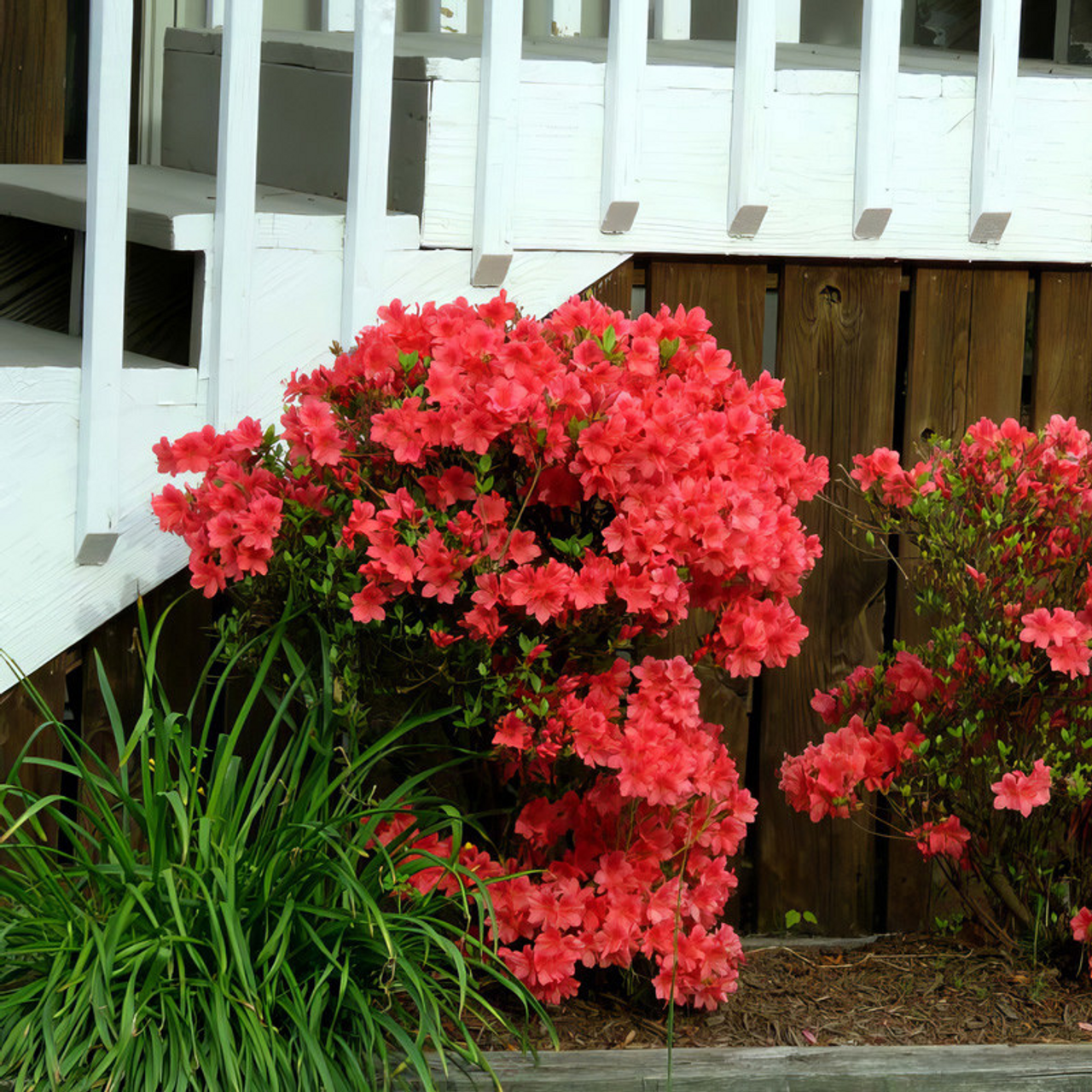
Blueberry Bushes
Uses:
- Specimen or Focal Point
- Container Gardens
- Edible Gardens
Features:
- Fall Color
- Attracts Butterflies & Bees
- Delicious Berries
Sunlight:
- Full Sun
- 6+ Hours of Direct Sun
Growing Zones:
- 3-10
- What is My Zone?
Blueberries are deciduous shrubs with an upright, rounded form. These shrubs have attractive, ovate foliage that turns vibrant red, burgundy, and orange in the fall. White bell-shaped blooms appear in the spring, which transition to delicious fruit in the summer. Plant several blueberry bushes of the same species (but different varieties) to ensure the largest yield.
About Blueberry Bushes

Blue Huckleberries
North America
Edible Plants
Broadleaf Evergreen, Deciduous, Semi-evergreen
3 - 8
Pink, White
Spring
Creeping, Erect
Bees, Butterflies, Birds
Humidity, Mild drought
Deer, Insect Pests
Where To Plant Blueberry Bushes In The Garden
Blueberry shrubs feature ornamental foliage across multiple seasons, springtime blossoms, and summer clusters of sweet berries. The berries contain beneficial nutrients, making them a healthy addition to the home harvest. Over years, they can become quite productive, steadily increasing yields each season. In addition, these shrubs live for decades, providing a beautiful and practical anchor in a variety of landscape designs.
Use blueberry bushes as a cohesive hedge along sunny borders or group them in dedicated fruit beds for maximum effect. Their preference for acidic soil pairs well with other acid-loving ornamentals, and placing them away from competing trees ensures optimal light. They also thrive in consistently moist conditions, so be sure the site offers good drainage and regular irrigation. Netting or fencing may be wise if local birds or wildlife show too much interest in ripening berries.
Blueberry Bush Care
When planting, dig wide holes and amend the backfill with acidifying materials such as peat moss and sulfur to achieve a soil pH of around 4.0 to 5.5. Provide each shrub at least six hours of full sun, and water steadily—drip irrigation makes this job more efficient. A light application of acid-friendly fertilizer each year meets their low nutrient requirements. Excessive feeding can inhibit their growth, so caution is advised.
Prune in late winter, taking out old or damaged canes to invigorate new shoots that will bear fruit more abundantly. Harvest berries only after they turn fully blue and detach with ease; their flavor is noticeably sweeter at that stage. Store unwashed berries in shallow containers in the refrigerator, or lay them in a single layer to freeze for extended enjoyment. For winter protection, renew mulch to shield shallow roots and install barriers if rabbits or deer are a concern.
Learn More About Blueberry Bush

Growing Blueberry Bushes in Pots
For container growing, start with a roomy pot that has good drainage, filling it with nutrient-rich potting mix and compost. Place the container in a position that receives ample sunlight, and water frequently to keep the soil moist but never waterlogged. Pinch off early blooms so plants can establish strong roots before bearing fruit. Be mindful of fertilization, as potted strawberries deplete soil nutrients quickly and benefit from routine feeding to maintain healthy, consistent yields all summer.

Blueberry Bush Companion Plants
Blueberry allies must share its taste for acidic (pH 4-5), evenly moist yet sharply drained soil and plenty of unobstructed sun. Rhododendron forms a compatible evergreen screen that likes the same low pH while never crowding the berry canopy. Below, drought-tough sedum flowers for months, luring bees precisely when bushes need help setting fruit. Nitrogen-fixing lupine both enriches the lean ground and extends the spring bloom window for pollinators, whereas low-growing sweet alyssum can be direct-sown each year to carpet the root zone, conserve moisture, and draw hoverflies that keep aphids in check.

































